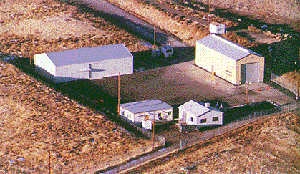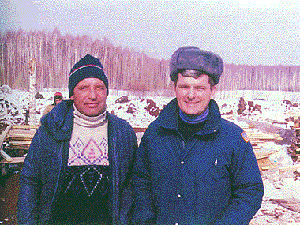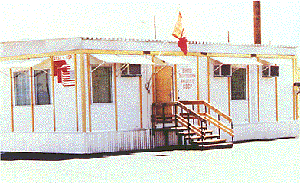| U.S. Preparations for INF Portal Monitoring Inspections | ||
 At Magna, the Soviet continuous portal monitoring inspection area contained four buildings. From left to right, the Soviet Warehouse, Soviet Data Collection Center, American Inspection Building, and the Environmental Shelter for examining vehicles exiting the rocket motor production plant. |
With the
signing of the INF Treaty in December 1987 and the
establishment of the On-Site Inspection Agency in January
1988, preparations for the continuous portal monitoring
inspections began in earnest, as part of the larger
effort to plan and organize the entire INF Treaty
mission. With the portal monitoring inspections, two
factors complicated the planning effort. First, this type
of on-site inspection was unprecedented. Before the INF
Treaty, neither nation had entered into any arms control
agreement that required its armament plants to be placed
under 24-hour-a-day on-site inspection. Plant managers,
inspectors, escorts, the national governments--no one had
any experience with this type of intrusive, continuous
on-site inspection. The second complicating factor
concerned a concept imbedded in the treaty: Virtually all
rights and obligations were reciprocal; hence, what was
done at Votkinsk influenced what was done at Magna and
vice versa. More than with any other type of INF
inspection, the issue of reciprocity complicated the
operation of these inspections. In February 1988, General Lajoie set up a separate directorate specifically dedicated to managing and planning for the continuous portal monitoring escort and inspection missions. Colonel Douglas M. Englund, U.S. Army; Colonel George M. Connell, USMC; and a small staff of officers constituted the original directorate. In the beginning they had two tasks: organize and coordinate all operational aspects of the U.S. escort mission at Magna and organize, manage, and lead the portal monitoring inspection mission at Votkinsk. |

